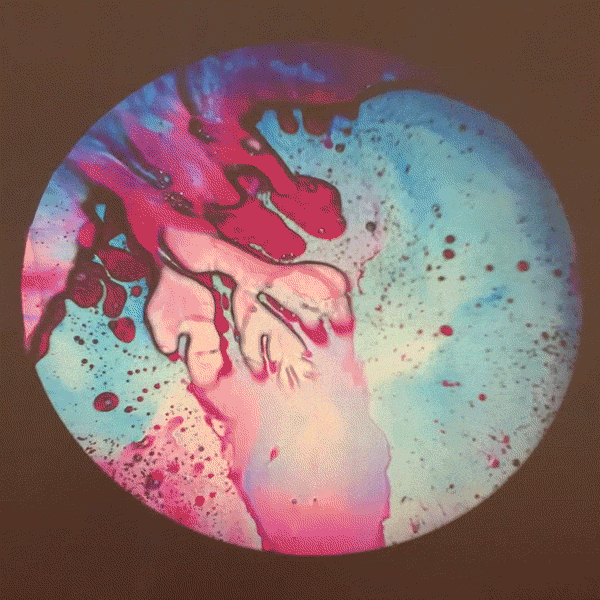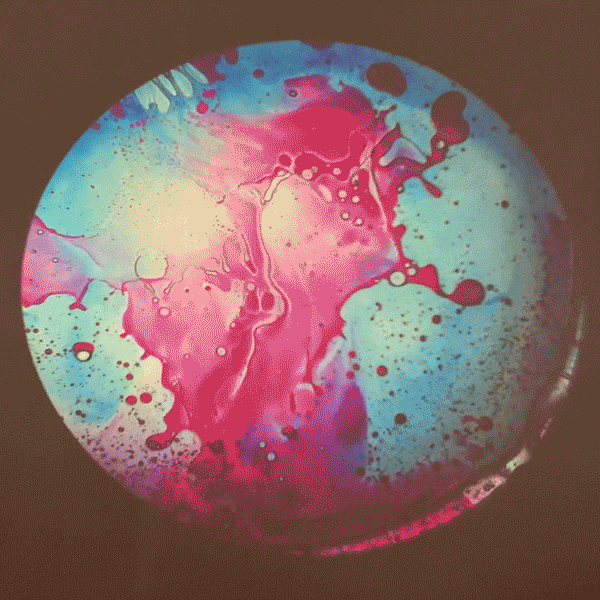Posted on May 21, 2019 in ASRC News, Structural Biology Initiative
On a recent Friday evening inside the reclaimed planetarium of The City College of New York’s Marshak Science Building, a group of students, faculty, local artists and other guests sat transfixed by a constantly morphing liquid light show projected onto the domed ceiling. In the corner of the room, artist Steve Pavlovsky mixed a bit of oil, water, alcohol, and dye to create the strikingly vibrant colors and unpredictable shapes that mesmerized the audience. But these mutating spheres provided much more than visual entertainment: They aptly illustrated a concept that is radically changing scientists’ understanding of how cells function. For nearly a decade, researchers have been probing how the various molecules within a cell use a process called liquid-liquid phase separation to segregate and coalesce by type, enabling each group to efficiently perform their unique functions without interference from the other.


Liquid light artist Steve Pavlovsky manipulates mixtures of oil, water, alcohol and dye and projects the images onto the ceiling to illustrate how scientists envision the process of liquid-liquid phase separation inside cells.
Understanding liquid-liquid phase separation and how a malfunction of this process might be at the root of some disease development is the focus of Professor Shana Elbaum-Garfinkle’s (The Graduate Center, CUNY) research. Her lab at the Advanced Science Research Center at The Graduate Center, CUNY’s Structural Biology Initiative has been looking into whether this mechanism plays a role in the development of Alzheimer’s disease.
“It’s a surprisingly simple, but completely transformative paradigm that could help researchers finally understand how so many diseases begin,” said Elbaum-Garfinkle.
Elbaum-Garfinkle is also interested in helping lay people and very young scientists grasp the concept of liquid-liquid phase separation, which resembles how oil and water droplets first bead and then merge together in massive, separate blobs within a single container. That goal was the genesis of her idea to use art like the recent light show to communicate the excitement of the liquid-liquid phase separation breakthrough in cellular science.
“One of the things I’ve realized in creating these light shows is how closely systems of operation resemble one another on the macro and micro scales,” said liquid light show artist Pavlovsky. “These types of relationships can be seen on the grand scale in space and on the tiniest level in our cells.”
Elbaum-Garfinkle has plans to grow her recent hands-on event, during which the attendees also got to create their own cell-art light shows, into an ongoing science and art series that helps the public gain a better understanding of science and how researchers work.
“Liquid light artists like Steve and scientists like me are both obsessed with liquid properties like surface tension and viscosity,” said Elbaum-Garfinkle. “These properties are fundamental to our work, and they can help unite us and facilitate mutual enlightenment. It’s both a communication tool and a learning opportunity that enriches both communities.”
